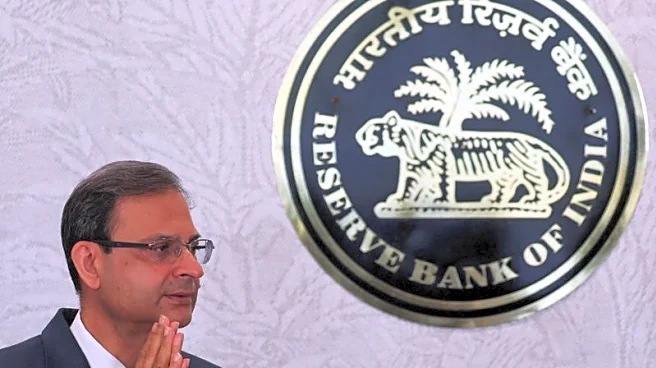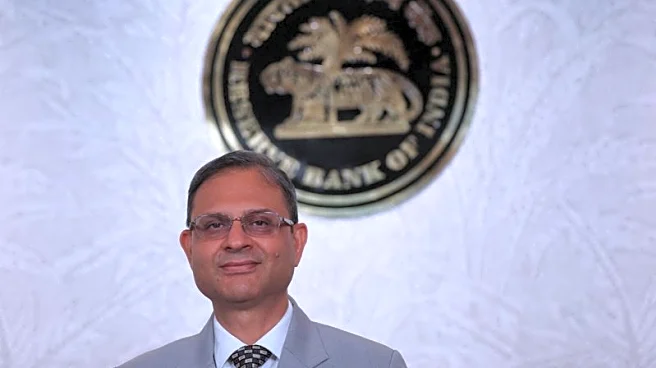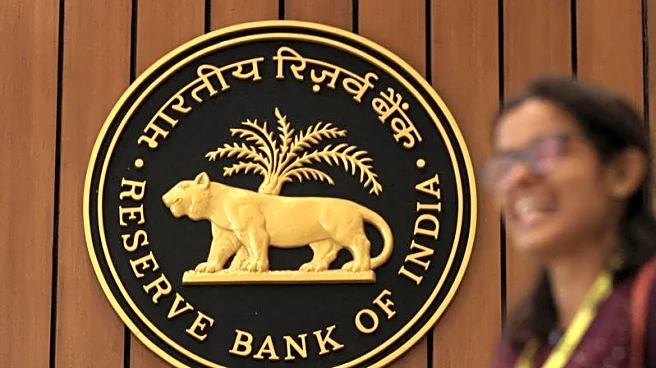What's Happening?
India's central bank decided to keep its benchmark interest rate unchanged at 5.5% on Wednesday. The decision was made by the six-member monetary policy committee, led by Governor Sanjay Malhotra, who stated that it was prudent to hold rates steady to allow recent policy measures, such as tax cuts, to take effect. The move comes as India's economy faces challenges due to US tariffs, and the central bank hinted at the possibility of easing rates in the future to support economic growth.
Why It's Important?
The decision to maintain interest rates is significant as it reflects the central bank's cautious approach in navigating economic uncertainties caused by international trade tensions. By keeping rates steady, the bank aims to stabilize the economy and provide time for recent fiscal measures to have an impact. This decision could influence investor confidence and economic activity in India, potentially affecting trade relations and economic partnerships with the US.
What's Next?
The central bank's indication of potential future rate cuts suggests that it is closely monitoring economic conditions and may adjust its policy to support growth if necessary. Stakeholders, including businesses and investors, will be watching for any signs of economic recovery or further challenges that could prompt the bank to change its stance.
Beyond the Headlines
The central bank's decision highlights the broader implications of global trade policies and their impact on national economies. It underscores the need for countries to adapt their monetary policies in response to external economic pressures, which can have long-term effects on growth and stability.












